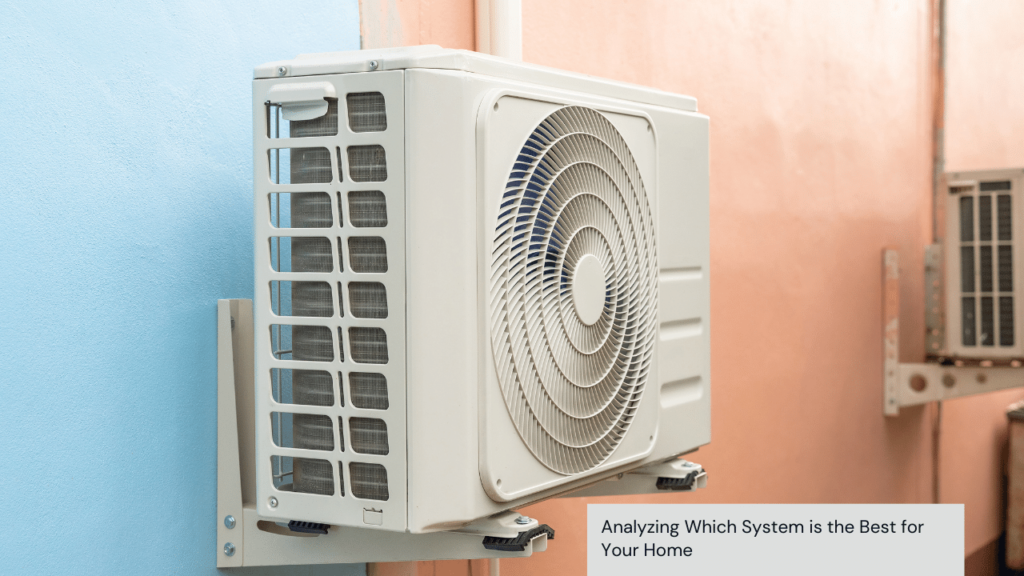Central air conditioning and forced air are among the many popular HVAC (Heating, Ventilation, and Air Conditioning) choices for home and commercial settings. The fundamental distinction between these two systems must not be taken lightly, as the consequences of precarious decision-making would definitely affect the cooling and heating of your house. This article will go into detail on the cores of the central air system and forced air system and discuss their respective benefits, energy efficiency, installation and maintenance requirements, as well as the other key points to note.
Central air conditioning and forced air systems are two types of HVAC systems designed for climate control of space within a building. They are similar in their air distribution methods in space and in transferring heat from space to the outside. Indeed, possessing the specific traits of the system will provide homeowners with the necessary information factor for choosing one among the many options that will be appealing to them, suitable for them, and will also suit their budget.
Discovering The Fundamentals of Central Air-Conditioning.
An Air Conditioning System with central air is an integrated Air Conditioning system that is meant to cool an entire home or building. The system, in this case, comprises several essential parts, such as the compressor, condenser, the evaporator, and the vast system of ducts. The outside compressor is tasked with moving the fluid through the system by entering and exiting the system, in which the condenser and evaporator cooperatively work to extract heat from the indoor air and deliver heat to the exterior atmosphere.

The ductwork, which is usually laid into walls and ceilings, however, is not altogether unnoticeable and performs the most vital role in the central A/C. It has the role of transportation facility, bringing the heated air inside the exhauster all the way to the different rooms and locations inside the house. This smooth, integrated approach allows for a controlled temperature level and uniform cooling throughout the entire core space of the living area.
The main benefit of central air conditioning is that it maintains the same temperature in the home while the family members are engaged in other activities. In contrast to the situation when you are using window units or standalone air conditioners, which will not drop the temperature evenly in an ample space but only in separate rooms, a central air system provides the same temperature in all of the rooms. On the other hand, it is not only desirable for its comfort but also can be energy efficient, hence creating a favorable environment that demands less cost.
Elucidating the Working of Forced Air Heating and Cooling
Unlike hydronic systems, forced air units depend on a furnace or heat pump for producing and distributing heated or cooled air. Unlike central air conditioning, which is mainly concerned with cooling, forced air systems are made with both heating and cooling abilities.
The core of a forced air system is the furnace or heat pump, and its function is to create heated or cooled air. This air is then moved through a system of ducts in the same fashion as a central air conditioning system, and it is finally distributed to the different rooms and areas of the house.
Versatility is another point in favor of forced air systems. These systems can be used with furnaces or heat pumps, which can provide both heating and cooling, thus making them suitable for homes in areas with variable climates. This flexibility allows homeowners to maintain an even indoor climate all the time, with no need for different heating and cooling machines.
Analyzing Which System is the Best for Your Home
In summary, the choice between central air conditioning or forced air systems is a matter of deliberation backed by many factors that must be taken into account, such as the homeowner’s specific requirements and preferences.

Central HVAC systems are advantageous as they provide the convenience of temperature control in all the rooms, higher energy efficiency than window units, and increased home marketability and appeal. In contrast, ducted central systems allow for the usage of both heating and cooling, as well as for zoning and individual temperature control.
While making these HVAC system choices, homeowners must take into account such factors like energy efficiency, installation and maintenance requirements, noise, indoor air quality, and cost. Through the understanding of the specific traits and drawbacks of different systems, homeowners will be able to make the right decision that would affect their budgets and long-term goals the most.
In the last, the buying central air or forced air system will be based on the homeowner’s specifications and concern. A professional HVAC contractor consultation would be very beneficial during the process of choosing a new HVAC system for your home. He/she will provide valuable guidance and expertise in order for a homeowner to make the best possible decision.

